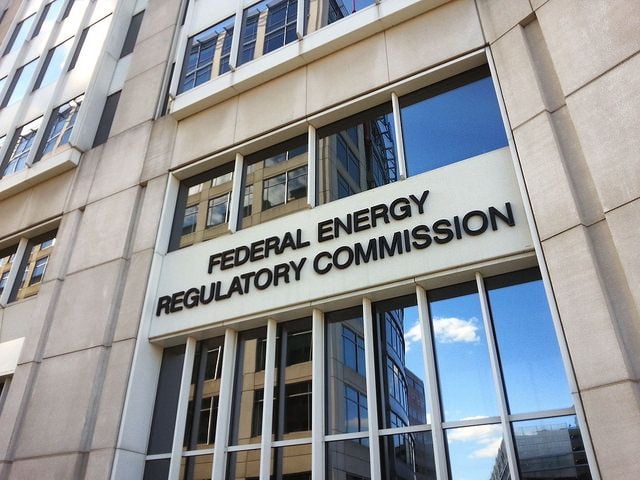
Before the Inflation Reduction Act and Bipartisan Infrastructure Law and the Biden-era step change for clean energy support they have ushered in, FERC Order 2222 was considered a big deal.
It was a rule change, or set of rule changes, handed down by the Federal Energy Regulatory Commission (FERC) to all of the ISOs and RTOs – the electricity grid and wholesale market operators – in its jurisdiction.
Enjoy 12 months of exclusive analysis
- Regular insight and analysis of the industry’s biggest developments
- In-depth interviews with the industry’s leading figures
- Annual digital subscription to the PV Tech Power journal
- Discounts on Solar Media’s portfolio of events, in-person and virtual
Passed in 2020, FERC Order 2222 commands ISOs and RTOs to reconfigure their wholesale electricity market structures to allow distributed energy resources (DERs) to participate without barriers to entry. That means solar PV, battery storage, smart thermostats, pool pumps and heat pumps, electric vehicles (EVs) and various other technologies like demand side response.
As with the preceding Order 841, which applied specifically to distributed and behind-the-meter energy storage – as opposed to 2222’s broader remit – the resources should be able to provide energy, capacity and ancillary services, FERC ruled.
At the time, then-CEO of the Energy Storage Association Kelly Speakes-Backman said it would allow DERs like residential and small commercial battery energy storage systems to access revenue opportunities and help balance the grid through being aggregated into virtual power plants (VPPs).
Order 2222’s passing was “a victory for enhancing grid reliability, enabling a more resilient grid and lowering costs for consumers,” Speakes-Backman said.
However, success in implementing the order has since then been patchy, to say the least. After it passed, FERC asked the market operators to file compliance plans.
“I think that there was a lot of promise with Order 2222, but I think if FERC takes a close look at all the compliance filings, they can’t do anything but reject every single one of them,” Chris Rauscher, senior director of policy and market development at Sunrun tells Energy-Storage.news.
Rauscher says that Sunrun, the US’ biggest residential solar PV installer with an increasing attachment to battery storage, “worked very hard” and had good dialogue with stakeholders including market operators on Order 2222.
Even so, the company doesn’t see any new incremental opportunities for residential aggregation as a result.
Changes ‘do not induce participation’ in markets
As regular readers will have seen from the feature interview with Chris Rauscher published last week, Sunrun continues to find various opportunities to aggregate customers’ home solar-plus-storage around the US without 2222 being fully enacted.
Compliance filings made to date have perhaps been faithful to the letter of the Order, but not to its spirit. Where rule changes have been made, in many cases they are insufficiently altered to enable aggregations of residential DERs.
“In my view, they have not complied with Order 2222, because the point was not to just change the market rules, the point was to induce participation by these resources,” Rauscher says.
For instance, New York ISO has introduced a 10kW minimum asset size rule for aggregation, which Rauscher points out effectively bars nearly all residential sized systems.
Elsewhere, PJM Interconnection’s wholesale market rules state that assets must be in both energy and capacity markets and here Rauscher says residential systems are unlikely to participate in daily energy markets.
Rauscher concedes also that while it feels disappointing to have seen Order 2222, which could simplify and standardise market participation at scale for aggregated DERs, fail to have an impact, the conversation around the value of DERs in the electricity system has at least been opened.
The Order made the right statement but has fallen down in terms of compliance and implementation, in other words.
‘Still a landmark ruling’
Sonnen Inc CEO Blake Richetta agrees that Order 2222 opened up a conversation that needed to be had. For this alone the ruling is profound, a genuine game changer even, Richetta says.
Richetta argues that industry expectations of Order 2222 may have been simplistic and lacking in understanding of just how major a set of changes would be required to implement the ruling.
It will take a multi-year process of ISOs and RTOs going back and forth with FERC to create a viable framework, rather than it being “some kind of handout for grid services out of nowhere,” as Richetta calls it.
Nonetheless, FERC Order 2222 does establish a direction of travel for the regulated energy markets that is positive.
“Directionally speaking, this country now has a framework that is saying behind-the-meter energy storage systems should be able to be swarm controlled, networked and utilised for the grid of the future and for energy transition, and the decentralisation of the grid,” Richetta says.
“[FERC Order 2222] is still a landmark to me, because before that, I don’t know that it was for sure that that was the direction our country was taking at all.”
As a home battery storage provider with a focus on virtual power plant (VPP) business models, sonnen has noticed that its participation in the CAISO market in California has become smoother since Order 2222 was passed.
That’s an indirect impact, Richetta says. Even more indirect is the impact on Texas’ ERCOT market, which isn’t even a FERC-overseen jurisdiction. Nonetheless, sonnen is preparing an aggregated VPP business model launch in Texas and has noticed ERCOT has been benchmarking Order 2222 against its own efforts to integrate DERs.

Electrification cannot be ignored
sonnen’s Blake Richetta says his enthusiasm for FERC Order 2222 remains very high. Sunrun’s Chris Rauscher on the other hand still finds frustration in the perceived snail’s pace of implementation.
Most US wholesale energy markets were created a couple of decades ago as deregulation happened, and were, understandably, structured around coal and oil plants. That gave way to restructuring markets around natural gas as the marginal unit about 10 years ago.
That of course doesn’t lend itself well to the paradigm of distributed energy resources, being focused as it is on centralised thermal power generation. In making changes to market rules that don’t address this paradigm shift, RTOs and ISOs are largely “tinkering around the edges” rather than making changes to how markets are structured.
There is also the question that a lot of stakeholders in the energy sector are still tied to fossil fuel generation and have the most influential voice in energy markets.
Chris Rauscher says too that various stakeholders fear that allowing lots of smaller assets to participate will only complicate market operation.
“That, combined with the markets just being set up for fossil fuel interests, stakeholder groups being dominated by fossil fuel interests, you get to where we’re at today. Which is compliance filings that may adhere to the letter of Order 2222, but certainly don’t abide by the spirit,” Rauscher says.
The US clean energy market is already growing rapidly and is set for even faster growth, driven by the Inflation Reduction Act’s tax incentive policies. Rauscher says that grid and market operators can’t ignore the pace of electrification.
As everything from transport to heating becomes electrified, annual kilowatt-hour consumption is “going to double, at least,” Rauscher says. DERs can be a tool of flexibility to hold peak demand for energy from the grid steady or even reduce it, and the sooner markets recognise that, the better.
Energy-Storage.news’ publisher Solar Media will host the 5th Energy Storage Summit USA, 28-29 March 2023 in Austin, Texas. Featuring a packed programme of panels, presentations and fireside chats from industry leaders focusing on accelerating the market for energy storage across the country. For more information, go to the website.

